While fall is not the typical time to prune many plants, some are best done at this time of year for various reasons. Make a pruning calendar to ensure you always cut at the right time. Keep in mind that plants that can be pruned or trimmed in October don’t necessarily need to be cut back. Plants can reclaim some of the energy from foliage for storage in the roots, so there are some benefits of leaving plant matter until after hard frosts. Some plants you might want to leave up all winter for visual interest. If you do add pruning to your October gardening to-do list, follow best practices. Use clean, sharp tools. Compost plant material, unless it looks diseased, in which case throw it away. And follow guidelines particular to each plant. Here’s a list of plants you can tackle in October if they need cutting back.
1. Peonies
Peonies are prone to mildew that can spread between leaves in close quarters, especially in wet fall or winter conditions. It’s best to cut back peonies before winter – and October is a good time to do it. Use sharp, clean shears to cut all the stems back to about two to three inches (5-7.5cm) above the soil. If you see any diseased leaves or stems appear before fall, trim them off.
2. Knock Out Roses
Bud formation is often a key to the appropriate time to prune a plant. Knock Out roses develop flower buds on new growth in spring. This means you can trim them back in late fall or winter without reducing the number of flowers that appear next season. Looking for a final splash of brightness to close out the growing season? Add fall color to your garden with these plants from the Gardening Know How Shop. Prune Knock Out roses in October by about one-third. Other roses typically shouldn’t be trimmed at this time. An exception is an overgrown rose bush that could break under snowfall. Trim these back before winter.
3. Bee Balm
This striking perennial that attracts pollinators to your garden is, unfortunately, susceptible to powdery mildew. Even varieties developed for resistance can get infected. Good bee balm care involves cutting them back at the end of the season. If your plants still look healthy in October, trim out some of the stems to thin the plants. This will allow for more airflow to prevent mildew. Leave some of the healthy stems in place for winter interest so birds can eat the seeds. If you see signs of infection on bee balm earlier than fall, trim it back.
4. Southern Magnolia
Many flowering trees and shrubs are pruned in late winter or spring, but summer-blooming southern magnolia can be pruned in fall. The flowers often last into the fall. Once they have faded, trim out droopy, unhealthy, or broken branches. You can also do general shaping at this time. Pruning in winter or early spring can cause the wounds to bleed sap.
5. English Lavender
Fragrant English lavender blooms in summer and fall. It is best to trim these plants back after flowering. October is usually a good month for pruning lavender. Trim each plant back by one-half or one-third soon after the blooms have faded, but there is still plenty of time before truly cold weather sets in. Pruning helps reduce the risk of rot and fungal diseases among crowded stems.
6. Hostas
While some perennials can be kept in place for winter interest, pruning hostas is a job for fall. Let the foliage remain in place to gather more energy, but cut it back by October before it gets too cold. Hosta leaves left in place harbor slug eggs, which will hatch and wreak havoc next year. The old foliage can also prevent new growth in the spring. Trim hosta leaves back, leaving about two or three inches in place to protect the crown of the plant.
7. Bearded Iris
Bearded iris is another perennial that can be susceptible to disease if the garden bed isn’t kept clean and free of debris. The foliage tends to droop to the ground, becoming an excellent habitat for fungal pores and iris borers. Their eggs will overwinter in the leaves. Remove unhealthy foliage as needed throughout the growing season. Healthy foliage can stay in place until fall. In October, cut the leaves back to about six inches (15cm) from the ground and dispose of them. Do not compost the leaves.
8. Phlox
Phlox is another example of a perennial best cut back in the fall because of the risk of disease. Phlox is susceptible to powdery mildew, especially in wet conditions. Don’t give mildew time to set in and cause damage. Remove all the plant material from phlox in October, including seedheads. This article features products available from third-party vendors on the Gardening Know How Shop.
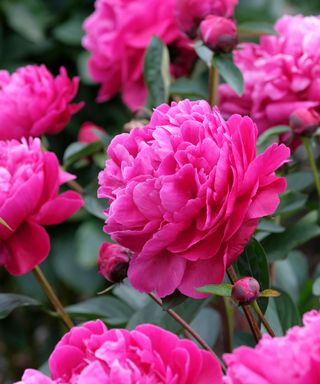
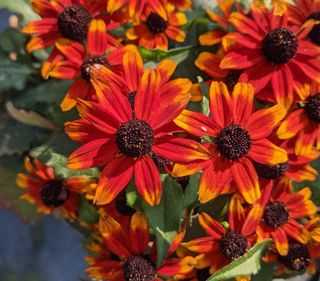
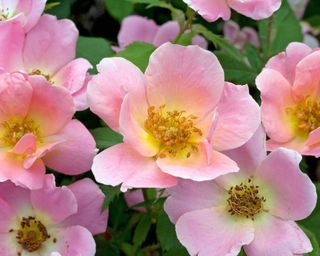
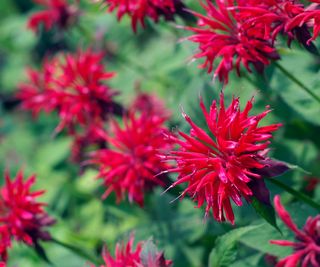

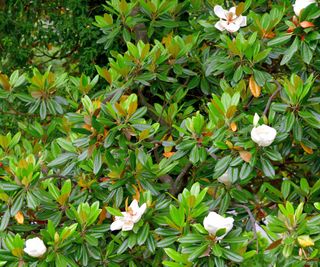

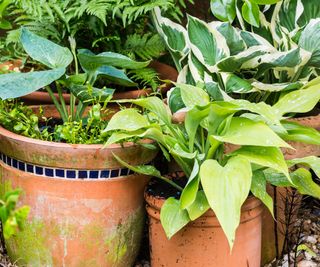
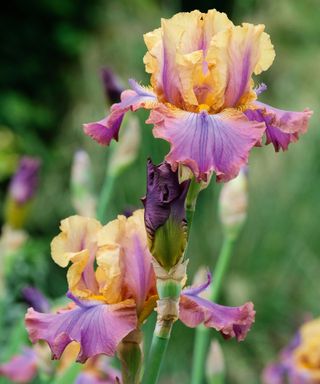
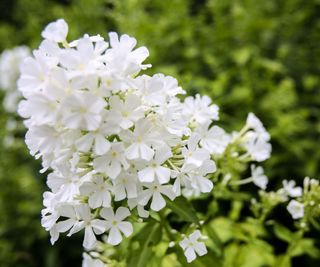
title: “8 Plants You Should Prune In October Before The Frosts Hit” ShowToc: true date: “2024-10-08” author: “Diego Phillips”
While fall is not the typical time to prune many plants, some are best done at this time of year for various reasons. Make a pruning calendar to ensure you always cut at the right time. Keep in mind that plants that can be pruned or trimmed in October don’t necessarily need to be cut back. Plants can reclaim some of the energy from foliage for storage in the roots, so there are some benefits of leaving plant matter until after hard frosts. Some plants you might want to leave up all winter for visual interest. If you do add pruning to your October gardening to-do list, follow best practices. Use clean, sharp tools. Compost plant material, unless it looks diseased, in which case throw it away. And follow guidelines particular to each plant. Here’s a list of plants you can tackle in October if they need cutting back.
1. Peonies
Peonies are prone to mildew that can spread between leaves in close quarters, especially in wet fall or winter conditions. It’s best to cut back peonies before winter – and October is a good time to do it. Use sharp, clean shears to cut all the stems back to about two to three inches (5-7.5cm) above the soil. If you see any diseased leaves or stems appear before fall, trim them off.
2. Knock Out Roses
Bud formation is often a key to the appropriate time to prune a plant. Knock Out roses develop flower buds on new growth in spring. This means you can trim them back in late fall or winter without reducing the number of flowers that appear next season. Looking for a final splash of brightness to close out the growing season? Add fall color to your garden with these plants from the Gardening Know How Shop. Prune Knock Out roses in October by about one-third. Other roses typically shouldn’t be trimmed at this time. An exception is an overgrown rose bush that could break under snowfall. Trim these back before winter.
3. Bee Balm
This striking perennial that attracts pollinators to your garden is, unfortunately, susceptible to powdery mildew. Even varieties developed for resistance can get infected. Good bee balm care involves cutting them back at the end of the season. If your plants still look healthy in October, trim out some of the stems to thin the plants. This will allow for more airflow to prevent mildew. Leave some of the healthy stems in place for winter interest so birds can eat the seeds. If you see signs of infection on bee balm earlier than fall, trim it back.
4. Southern Magnolia
Many flowering trees and shrubs are pruned in late winter or spring, but summer-blooming southern magnolia can be pruned in fall. The flowers often last into the fall. Once they have faded, trim out droopy, unhealthy, or broken branches. You can also do general shaping at this time. Pruning in winter or early spring can cause the wounds to bleed sap.
5. English Lavender
Fragrant English lavender blooms in summer and fall. It is best to trim these plants back after flowering. October is usually a good month for pruning lavender. Trim each plant back by one-half or one-third soon after the blooms have faded, but there is still plenty of time before truly cold weather sets in. Pruning helps reduce the risk of rot and fungal diseases among crowded stems.
6. Hostas
While some perennials can be kept in place for winter interest, pruning hostas is a job for fall. Let the foliage remain in place to gather more energy, but cut it back by October before it gets too cold. Hosta leaves left in place harbor slug eggs, which will hatch and wreak havoc next year. The old foliage can also prevent new growth in the spring. Trim hosta leaves back, leaving about two or three inches in place to protect the crown of the plant.
7. Bearded Iris
Bearded iris is another perennial that can be susceptible to disease if the garden bed isn’t kept clean and free of debris. The foliage tends to droop to the ground, becoming an excellent habitat for fungal pores and iris borers. Their eggs will overwinter in the leaves. Remove unhealthy foliage as needed throughout the growing season. Healthy foliage can stay in place until fall. In October, cut the leaves back to about six inches (15cm) from the ground and dispose of them. Do not compost the leaves.
8. Phlox
Phlox is another example of a perennial best cut back in the fall because of the risk of disease. Phlox is susceptible to powdery mildew, especially in wet conditions. Don’t give mildew time to set in and cause damage. Remove all the plant material from phlox in October, including seedheads. This article features products available from third-party vendors on the Gardening Know How Shop.










title: “8 Plants You Should Prune In October Before The Frosts Hit” ShowToc: true date: “2024-09-14” author: “Keith Mills”
While fall is not the typical time to prune many plants, some are best done at this time of year for various reasons. Make a pruning calendar to ensure you always cut at the right time. Keep in mind that plants that can be pruned or trimmed in October don’t necessarily need to be cut back. Plants can reclaim some of the energy from foliage for storage in the roots, so there are some benefits of leaving plant matter until after hard frosts. Some plants you might want to leave up all winter for visual interest. If you do add pruning to your October gardening to-do list, follow best practices. Use clean, sharp tools. Compost plant material, unless it looks diseased, in which case throw it away. And follow guidelines particular to each plant. Here’s a list of plants you can tackle in October if they need cutting back.
1. Peonies
Peonies are prone to mildew that can spread between leaves in close quarters, especially in wet fall or winter conditions. It’s best to cut back peonies before winter – and October is a good time to do it. Use sharp, clean shears to cut all the stems back to about two to three inches (5-7.5cm) above the soil. If you see any diseased leaves or stems appear before fall, trim them off.
2. Knock Out Roses
Bud formation is often a key to the appropriate time to prune a plant. Knock Out roses develop flower buds on new growth in spring. This means you can trim them back in late fall or winter without reducing the number of flowers that appear next season. Looking for a final splash of brightness to close out the growing season? Add fall color to your garden with these plants from the Gardening Know How Shop. Prune Knock Out roses in October by about one-third. Other roses typically shouldn’t be trimmed at this time. An exception is an overgrown rose bush that could break under snowfall. Trim these back before winter.
3. Bee Balm
This striking perennial that attracts pollinators to your garden is, unfortunately, susceptible to powdery mildew. Even varieties developed for resistance can get infected. Good bee balm care involves cutting them back at the end of the season. If your plants still look healthy in October, trim out some of the stems to thin the plants. This will allow for more airflow to prevent mildew. Leave some of the healthy stems in place for winter interest so birds can eat the seeds. If you see signs of infection on bee balm earlier than fall, trim it back.
4. Southern Magnolia
Many flowering trees and shrubs are pruned in late winter or spring, but summer-blooming southern magnolia can be pruned in fall. The flowers often last into the fall. Once they have faded, trim out droopy, unhealthy, or broken branches. You can also do general shaping at this time. Pruning in winter or early spring can cause the wounds to bleed sap.
5. English Lavender
Fragrant English lavender blooms in summer and fall. It is best to trim these plants back after flowering. October is usually a good month for pruning lavender. Trim each plant back by one-half or one-third soon after the blooms have faded, but there is still plenty of time before truly cold weather sets in. Pruning helps reduce the risk of rot and fungal diseases among crowded stems.
6. Hostas
While some perennials can be kept in place for winter interest, pruning hostas is a job for fall. Let the foliage remain in place to gather more energy, but cut it back by October before it gets too cold. Hosta leaves left in place harbor slug eggs, which will hatch and wreak havoc next year. The old foliage can also prevent new growth in the spring. Trim hosta leaves back, leaving about two or three inches in place to protect the crown of the plant.
7. Bearded Iris
Bearded iris is another perennial that can be susceptible to disease if the garden bed isn’t kept clean and free of debris. The foliage tends to droop to the ground, becoming an excellent habitat for fungal pores and iris borers. Their eggs will overwinter in the leaves. Remove unhealthy foliage as needed throughout the growing season. Healthy foliage can stay in place until fall. In October, cut the leaves back to about six inches (15cm) from the ground and dispose of them. Do not compost the leaves.
8. Phlox
Phlox is another example of a perennial best cut back in the fall because of the risk of disease. Phlox is susceptible to powdery mildew, especially in wet conditions. Don’t give mildew time to set in and cause damage. Remove all the plant material from phlox in October, including seedheads. This article features products available from third-party vendors on the Gardening Know How Shop.










title: “8 Plants You Should Prune In October Before The Frosts Hit” ShowToc: true date: “2024-09-06” author: “Lisa Dubose”
While fall is not the typical time to prune many plants, some are best done at this time of year for various reasons. Make a pruning calendar to ensure you always cut at the right time. Keep in mind that plants that can be pruned or trimmed in October don’t necessarily need to be cut back. Plants can reclaim some of the energy from foliage for storage in the roots, so there are some benefits of leaving plant matter until after hard frosts. Some plants you might want to leave up all winter for visual interest. If you do add pruning to your October gardening to-do list, follow best practices. Use clean, sharp tools. Compost plant material, unless it looks diseased, in which case throw it away. And follow guidelines particular to each plant. Here’s a list of plants you can tackle in October if they need cutting back.
1. Peonies
Peonies are prone to mildew that can spread between leaves in close quarters, especially in wet fall or winter conditions. It’s best to cut back peonies before winter – and October is a good time to do it. Use sharp, clean shears to cut all the stems back to about two to three inches (5-7.5cm) above the soil. If you see any diseased leaves or stems appear before fall, trim them off.
2. Knock Out Roses
Bud formation is often a key to the appropriate time to prune a plant. Knock Out roses develop flower buds on new growth in spring. This means you can trim them back in late fall or winter without reducing the number of flowers that appear next season. Looking for a final splash of brightness to close out the growing season? Add fall color to your garden with these plants from the Gardening Know How Shop. Prune Knock Out roses in October by about one-third. Other roses typically shouldn’t be trimmed at this time. An exception is an overgrown rose bush that could break under snowfall. Trim these back before winter.
3. Bee Balm
This striking perennial that attracts pollinators to your garden is, unfortunately, susceptible to powdery mildew. Even varieties developed for resistance can get infected. Good bee balm care involves cutting them back at the end of the season. If your plants still look healthy in October, trim out some of the stems to thin the plants. This will allow for more airflow to prevent mildew. Leave some of the healthy stems in place for winter interest so birds can eat the seeds. If you see signs of infection on bee balm earlier than fall, trim it back.
4. Southern Magnolia
Many flowering trees and shrubs are pruned in late winter or spring, but summer-blooming southern magnolia can be pruned in fall. The flowers often last into the fall. Once they have faded, trim out droopy, unhealthy, or broken branches. You can also do general shaping at this time. Pruning in winter or early spring can cause the wounds to bleed sap.
5. English Lavender
Fragrant English lavender blooms in summer and fall. It is best to trim these plants back after flowering. October is usually a good month for pruning lavender. Trim each plant back by one-half or one-third soon after the blooms have faded, but there is still plenty of time before truly cold weather sets in. Pruning helps reduce the risk of rot and fungal diseases among crowded stems.
6. Hostas
While some perennials can be kept in place for winter interest, pruning hostas is a job for fall. Let the foliage remain in place to gather more energy, but cut it back by October before it gets too cold. Hosta leaves left in place harbor slug eggs, which will hatch and wreak havoc next year. The old foliage can also prevent new growth in the spring. Trim hosta leaves back, leaving about two or three inches in place to protect the crown of the plant.
7. Bearded Iris
Bearded iris is another perennial that can be susceptible to disease if the garden bed isn’t kept clean and free of debris. The foliage tends to droop to the ground, becoming an excellent habitat for fungal pores and iris borers. Their eggs will overwinter in the leaves. Remove unhealthy foliage as needed throughout the growing season. Healthy foliage can stay in place until fall. In October, cut the leaves back to about six inches (15cm) from the ground and dispose of them. Do not compost the leaves.
8. Phlox
Phlox is another example of a perennial best cut back in the fall because of the risk of disease. Phlox is susceptible to powdery mildew, especially in wet conditions. Don’t give mildew time to set in and cause damage. Remove all the plant material from phlox in October, including seedheads. This article features products available from third-party vendors on the Gardening Know How Shop.










title: “8 Plants You Should Prune In October Before The Frosts Hit” ShowToc: true date: “2024-09-02” author: “William Wetmore”
While fall is not the typical time to prune many plants, some are best done at this time of year for various reasons. Make a pruning calendar to ensure you always cut at the right time. Keep in mind that plants that can be pruned or trimmed in October don’t necessarily need to be cut back. Plants can reclaim some of the energy from foliage for storage in the roots, so there are some benefits of leaving plant matter until after hard frosts. Some plants you might want to leave up all winter for visual interest. If you do add pruning to your October gardening to-do list, follow best practices. Use clean, sharp tools. Compost plant material, unless it looks diseased, in which case throw it away. And follow guidelines particular to each plant. Here’s a list of plants you can tackle in October if they need cutting back.
1. Peonies
Peonies are prone to mildew that can spread between leaves in close quarters, especially in wet fall or winter conditions. It’s best to cut back peonies before winter – and October is a good time to do it. Use sharp, clean shears to cut all the stems back to about two to three inches (5-7.5cm) above the soil. If you see any diseased leaves or stems appear before fall, trim them off.
2. Knock Out Roses
Bud formation is often a key to the appropriate time to prune a plant. Knock Out roses develop flower buds on new growth in spring. This means you can trim them back in late fall or winter without reducing the number of flowers that appear next season. Looking for a final splash of brightness to close out the growing season? Add fall color to your garden with these plants from the Gardening Know How Shop. Prune Knock Out roses in October by about one-third. Other roses typically shouldn’t be trimmed at this time. An exception is an overgrown rose bush that could break under snowfall. Trim these back before winter.
3. Bee Balm
This striking perennial that attracts pollinators to your garden is, unfortunately, susceptible to powdery mildew. Even varieties developed for resistance can get infected. Good bee balm care involves cutting them back at the end of the season. If your plants still look healthy in October, trim out some of the stems to thin the plants. This will allow for more airflow to prevent mildew. Leave some of the healthy stems in place for winter interest so birds can eat the seeds. If you see signs of infection on bee balm earlier than fall, trim it back.
4. Southern Magnolia
Many flowering trees and shrubs are pruned in late winter or spring, but summer-blooming southern magnolia can be pruned in fall. The flowers often last into the fall. Once they have faded, trim out droopy, unhealthy, or broken branches. You can also do general shaping at this time. Pruning in winter or early spring can cause the wounds to bleed sap.
5. English Lavender
Fragrant English lavender blooms in summer and fall. It is best to trim these plants back after flowering. October is usually a good month for pruning lavender. Trim each plant back by one-half or one-third soon after the blooms have faded, but there is still plenty of time before truly cold weather sets in. Pruning helps reduce the risk of rot and fungal diseases among crowded stems.
6. Hostas
While some perennials can be kept in place for winter interest, pruning hostas is a job for fall. Let the foliage remain in place to gather more energy, but cut it back by October before it gets too cold. Hosta leaves left in place harbor slug eggs, which will hatch and wreak havoc next year. The old foliage can also prevent new growth in the spring. Trim hosta leaves back, leaving about two or three inches in place to protect the crown of the plant.
7. Bearded Iris
Bearded iris is another perennial that can be susceptible to disease if the garden bed isn’t kept clean and free of debris. The foliage tends to droop to the ground, becoming an excellent habitat for fungal pores and iris borers. Their eggs will overwinter in the leaves. Remove unhealthy foliage as needed throughout the growing season. Healthy foliage can stay in place until fall. In October, cut the leaves back to about six inches (15cm) from the ground and dispose of them. Do not compost the leaves.
8. Phlox
Phlox is another example of a perennial best cut back in the fall because of the risk of disease. Phlox is susceptible to powdery mildew, especially in wet conditions. Don’t give mildew time to set in and cause damage. Remove all the plant material from phlox in October, including seedheads. This article features products available from third-party vendors on the Gardening Know How Shop.










title: “8 Plants You Should Prune In October Before The Frosts Hit” ShowToc: true date: “2024-09-18” author: “Matthew Springer”
While fall is not the typical time to prune many plants, some are best done at this time of year for various reasons. Make a pruning calendar to ensure you always cut at the right time. Keep in mind that plants that can be pruned or trimmed in October don’t necessarily need to be cut back. Plants can reclaim some of the energy from foliage for storage in the roots, so there are some benefits of leaving plant matter until after hard frosts. Some plants you might want to leave up all winter for visual interest. If you do add pruning to your October gardening to-do list, follow best practices. Use clean, sharp tools. Compost plant material, unless it looks diseased, in which case throw it away. And follow guidelines particular to each plant. Here’s a list of plants you can tackle in October if they need cutting back.
1. Peonies
Peonies are prone to mildew that can spread between leaves in close quarters, especially in wet fall or winter conditions. It’s best to cut back peonies before winter – and October is a good time to do it. Use sharp, clean shears to cut all the stems back to about two to three inches (5-7.5cm) above the soil. If you see any diseased leaves or stems appear before fall, trim them off.
2. Knock Out Roses
Bud formation is often a key to the appropriate time to prune a plant. Knock Out roses develop flower buds on new growth in spring. This means you can trim them back in late fall or winter without reducing the number of flowers that appear next season. Looking for a final splash of brightness to close out the growing season? Add fall color to your garden with these plants from the Gardening Know How Shop. Prune Knock Out roses in October by about one-third. Other roses typically shouldn’t be trimmed at this time. An exception is an overgrown rose bush that could break under snowfall. Trim these back before winter.
3. Bee Balm
This striking perennial that attracts pollinators to your garden is, unfortunately, susceptible to powdery mildew. Even varieties developed for resistance can get infected. Good bee balm care involves cutting them back at the end of the season. If your plants still look healthy in October, trim out some of the stems to thin the plants. This will allow for more airflow to prevent mildew. Leave some of the healthy stems in place for winter interest so birds can eat the seeds. If you see signs of infection on bee balm earlier than fall, trim it back.
4. Southern Magnolia
Many flowering trees and shrubs are pruned in late winter or spring, but summer-blooming southern magnolia can be pruned in fall. The flowers often last into the fall. Once they have faded, trim out droopy, unhealthy, or broken branches. You can also do general shaping at this time. Pruning in winter or early spring can cause the wounds to bleed sap.
5. English Lavender
Fragrant English lavender blooms in summer and fall. It is best to trim these plants back after flowering. October is usually a good month for pruning lavender. Trim each plant back by one-half or one-third soon after the blooms have faded, but there is still plenty of time before truly cold weather sets in. Pruning helps reduce the risk of rot and fungal diseases among crowded stems.
6. Hostas
While some perennials can be kept in place for winter interest, pruning hostas is a job for fall. Let the foliage remain in place to gather more energy, but cut it back by October before it gets too cold. Hosta leaves left in place harbor slug eggs, which will hatch and wreak havoc next year. The old foliage can also prevent new growth in the spring. Trim hosta leaves back, leaving about two or three inches in place to protect the crown of the plant.
7. Bearded Iris
Bearded iris is another perennial that can be susceptible to disease if the garden bed isn’t kept clean and free of debris. The foliage tends to droop to the ground, becoming an excellent habitat for fungal pores and iris borers. Their eggs will overwinter in the leaves. Remove unhealthy foliage as needed throughout the growing season. Healthy foliage can stay in place until fall. In October, cut the leaves back to about six inches (15cm) from the ground and dispose of them. Do not compost the leaves.
8. Phlox
Phlox is another example of a perennial best cut back in the fall because of the risk of disease. Phlox is susceptible to powdery mildew, especially in wet conditions. Don’t give mildew time to set in and cause damage. Remove all the plant material from phlox in October, including seedheads. This article features products available from third-party vendors on the Gardening Know How Shop.










title: “8 Plants You Should Prune In October Before The Frosts Hit” ShowToc: true date: “2024-10-20” author: “Curtis Tracy”
While fall is not the typical time to prune many plants, some are best done at this time of year for various reasons. Make a pruning calendar to ensure you always cut at the right time. Keep in mind that plants that can be pruned or trimmed in October don’t necessarily need to be cut back. Plants can reclaim some of the energy from foliage for storage in the roots, so there are some benefits of leaving plant matter until after hard frosts. Some plants you might want to leave up all winter for visual interest. If you do add pruning to your October gardening to-do list, follow best practices. Use clean, sharp tools. Compost plant material, unless it looks diseased, in which case throw it away. And follow guidelines particular to each plant. Here’s a list of plants you can tackle in October if they need cutting back.
1. Peonies
Peonies are prone to mildew that can spread between leaves in close quarters, especially in wet fall or winter conditions. It’s best to cut back peonies before winter – and October is a good time to do it. Use sharp, clean shears to cut all the stems back to about two to three inches (5-7.5cm) above the soil. If you see any diseased leaves or stems appear before fall, trim them off.
2. Knock Out Roses
Bud formation is often a key to the appropriate time to prune a plant. Knock Out roses develop flower buds on new growth in spring. This means you can trim them back in late fall or winter without reducing the number of flowers that appear next season. Looking for a final splash of brightness to close out the growing season? Add fall color to your garden with these plants from the Gardening Know How Shop. Prune Knock Out roses in October by about one-third. Other roses typically shouldn’t be trimmed at this time. An exception is an overgrown rose bush that could break under snowfall. Trim these back before winter.
3. Bee Balm
This striking perennial that attracts pollinators to your garden is, unfortunately, susceptible to powdery mildew. Even varieties developed for resistance can get infected. Good bee balm care involves cutting them back at the end of the season. If your plants still look healthy in October, trim out some of the stems to thin the plants. This will allow for more airflow to prevent mildew. Leave some of the healthy stems in place for winter interest so birds can eat the seeds. If you see signs of infection on bee balm earlier than fall, trim it back.
4. Southern Magnolia
Many flowering trees and shrubs are pruned in late winter or spring, but summer-blooming southern magnolia can be pruned in fall. The flowers often last into the fall. Once they have faded, trim out droopy, unhealthy, or broken branches. You can also do general shaping at this time. Pruning in winter or early spring can cause the wounds to bleed sap.
5. English Lavender
Fragrant English lavender blooms in summer and fall. It is best to trim these plants back after flowering. October is usually a good month for pruning lavender. Trim each plant back by one-half or one-third soon after the blooms have faded, but there is still plenty of time before truly cold weather sets in. Pruning helps reduce the risk of rot and fungal diseases among crowded stems.
6. Hostas
While some perennials can be kept in place for winter interest, pruning hostas is a job for fall. Let the foliage remain in place to gather more energy, but cut it back by October before it gets too cold. Hosta leaves left in place harbor slug eggs, which will hatch and wreak havoc next year. The old foliage can also prevent new growth in the spring. Trim hosta leaves back, leaving about two or three inches in place to protect the crown of the plant.
7. Bearded Iris
Bearded iris is another perennial that can be susceptible to disease if the garden bed isn’t kept clean and free of debris. The foliage tends to droop to the ground, becoming an excellent habitat for fungal pores and iris borers. Their eggs will overwinter in the leaves. Remove unhealthy foliage as needed throughout the growing season. Healthy foliage can stay in place until fall. In October, cut the leaves back to about six inches (15cm) from the ground and dispose of them. Do not compost the leaves.
8. Phlox
Phlox is another example of a perennial best cut back in the fall because of the risk of disease. Phlox is susceptible to powdery mildew, especially in wet conditions. Don’t give mildew time to set in and cause damage. Remove all the plant material from phlox in October, including seedheads. This article features products available from third-party vendors on the Gardening Know How Shop.










title: “8 Plants You Should Prune In October Before The Frosts Hit” ShowToc: true date: “2024-09-16” author: “Samuel Lochrico”
While fall is not the typical time to prune many plants, some are best done at this time of year for various reasons. Make a pruning calendar to ensure you always cut at the right time. Keep in mind that plants that can be pruned or trimmed in October don’t necessarily need to be cut back. Plants can reclaim some of the energy from foliage for storage in the roots, so there are some benefits of leaving plant matter until after hard frosts. Some plants you might want to leave up all winter for visual interest. If you do add pruning to your October gardening to-do list, follow best practices. Use clean, sharp tools. Compost plant material, unless it looks diseased, in which case throw it away. And follow guidelines particular to each plant. Here’s a list of plants you can tackle in October if they need cutting back.
1. Peonies
Peonies are prone to mildew that can spread between leaves in close quarters, especially in wet fall or winter conditions. It’s best to cut back peonies before winter – and October is a good time to do it. Use sharp, clean shears to cut all the stems back to about two to three inches (5-7.5cm) above the soil. If you see any diseased leaves or stems appear before fall, trim them off.
2. Knock Out Roses
Bud formation is often a key to the appropriate time to prune a plant. Knock Out roses develop flower buds on new growth in spring. This means you can trim them back in late fall or winter without reducing the number of flowers that appear next season. Looking for a final splash of brightness to close out the growing season? Add fall color to your garden with these plants from the Gardening Know How Shop. Prune Knock Out roses in October by about one-third. Other roses typically shouldn’t be trimmed at this time. An exception is an overgrown rose bush that could break under snowfall. Trim these back before winter.
3. Bee Balm
This striking perennial that attracts pollinators to your garden is, unfortunately, susceptible to powdery mildew. Even varieties developed for resistance can get infected. Good bee balm care involves cutting them back at the end of the season. If your plants still look healthy in October, trim out some of the stems to thin the plants. This will allow for more airflow to prevent mildew. Leave some of the healthy stems in place for winter interest so birds can eat the seeds. If you see signs of infection on bee balm earlier than fall, trim it back.
4. Southern Magnolia
Many flowering trees and shrubs are pruned in late winter or spring, but summer-blooming southern magnolia can be pruned in fall. The flowers often last into the fall. Once they have faded, trim out droopy, unhealthy, or broken branches. You can also do general shaping at this time. Pruning in winter or early spring can cause the wounds to bleed sap.
5. English Lavender
Fragrant English lavender blooms in summer and fall. It is best to trim these plants back after flowering. October is usually a good month for pruning lavender. Trim each plant back by one-half or one-third soon after the blooms have faded, but there is still plenty of time before truly cold weather sets in. Pruning helps reduce the risk of rot and fungal diseases among crowded stems.
6. Hostas
While some perennials can be kept in place for winter interest, pruning hostas is a job for fall. Let the foliage remain in place to gather more energy, but cut it back by October before it gets too cold. Hosta leaves left in place harbor slug eggs, which will hatch and wreak havoc next year. The old foliage can also prevent new growth in the spring. Trim hosta leaves back, leaving about two or three inches in place to protect the crown of the plant.
7. Bearded Iris
Bearded iris is another perennial that can be susceptible to disease if the garden bed isn’t kept clean and free of debris. The foliage tends to droop to the ground, becoming an excellent habitat for fungal pores and iris borers. Their eggs will overwinter in the leaves. Remove unhealthy foliage as needed throughout the growing season. Healthy foliage can stay in place until fall. In October, cut the leaves back to about six inches (15cm) from the ground and dispose of them. Do not compost the leaves.
8. Phlox
Phlox is another example of a perennial best cut back in the fall because of the risk of disease. Phlox is susceptible to powdery mildew, especially in wet conditions. Don’t give mildew time to set in and cause damage. Remove all the plant material from phlox in October, including seedheads. This article features products available from third-party vendors on the Gardening Know How Shop.










title: “8 Plants You Should Prune In October Before The Frosts Hit” ShowToc: true date: “2024-10-14” author: “Adrian Simon”
While fall is not the typical time to prune many plants, some are best done at this time of year for various reasons. Make a pruning calendar to ensure you always cut at the right time. Keep in mind that plants that can be pruned or trimmed in October don’t necessarily need to be cut back. Plants can reclaim some of the energy from foliage for storage in the roots, so there are some benefits of leaving plant matter until after hard frosts. Some plants you might want to leave up all winter for visual interest. If you do add pruning to your October gardening to-do list, follow best practices. Use clean, sharp tools. Compost plant material, unless it looks diseased, in which case throw it away. And follow guidelines particular to each plant. Here’s a list of plants you can tackle in October if they need cutting back.
1. Peonies
Peonies are prone to mildew that can spread between leaves in close quarters, especially in wet fall or winter conditions. It’s best to cut back peonies before winter – and October is a good time to do it. Use sharp, clean shears to cut all the stems back to about two to three inches (5-7.5cm) above the soil. If you see any diseased leaves or stems appear before fall, trim them off.
2. Knock Out Roses
Bud formation is often a key to the appropriate time to prune a plant. Knock Out roses develop flower buds on new growth in spring. This means you can trim them back in late fall or winter without reducing the number of flowers that appear next season. Looking for a final splash of brightness to close out the growing season? Add fall color to your garden with these plants from the Gardening Know How Shop. Prune Knock Out roses in October by about one-third. Other roses typically shouldn’t be trimmed at this time. An exception is an overgrown rose bush that could break under snowfall. Trim these back before winter.
3. Bee Balm
This striking perennial that attracts pollinators to your garden is, unfortunately, susceptible to powdery mildew. Even varieties developed for resistance can get infected. Good bee balm care involves cutting them back at the end of the season. If your plants still look healthy in October, trim out some of the stems to thin the plants. This will allow for more airflow to prevent mildew. Leave some of the healthy stems in place for winter interest so birds can eat the seeds. If you see signs of infection on bee balm earlier than fall, trim it back.
4. Southern Magnolia
Many flowering trees and shrubs are pruned in late winter or spring, but summer-blooming southern magnolia can be pruned in fall. The flowers often last into the fall. Once they have faded, trim out droopy, unhealthy, or broken branches. You can also do general shaping at this time. Pruning in winter or early spring can cause the wounds to bleed sap.
5. English Lavender
Fragrant English lavender blooms in summer and fall. It is best to trim these plants back after flowering. October is usually a good month for pruning lavender. Trim each plant back by one-half or one-third soon after the blooms have faded, but there is still plenty of time before truly cold weather sets in. Pruning helps reduce the risk of rot and fungal diseases among crowded stems.
6. Hostas
While some perennials can be kept in place for winter interest, pruning hostas is a job for fall. Let the foliage remain in place to gather more energy, but cut it back by October before it gets too cold. Hosta leaves left in place harbor slug eggs, which will hatch and wreak havoc next year. The old foliage can also prevent new growth in the spring. Trim hosta leaves back, leaving about two or three inches in place to protect the crown of the plant.
7. Bearded Iris
Bearded iris is another perennial that can be susceptible to disease if the garden bed isn’t kept clean and free of debris. The foliage tends to droop to the ground, becoming an excellent habitat for fungal pores and iris borers. Their eggs will overwinter in the leaves. Remove unhealthy foliage as needed throughout the growing season. Healthy foliage can stay in place until fall. In October, cut the leaves back to about six inches (15cm) from the ground and dispose of them. Do not compost the leaves.
8. Phlox
Phlox is another example of a perennial best cut back in the fall because of the risk of disease. Phlox is susceptible to powdery mildew, especially in wet conditions. Don’t give mildew time to set in and cause damage. Remove all the plant material from phlox in October, including seedheads. This article features products available from third-party vendors on the Gardening Know How Shop.










title: “8 Plants You Should Prune In October Before The Frosts Hit” ShowToc: true date: “2024-10-05” author: “Daniela Ehmann”
While fall is not the typical time to prune many plants, some are best done at this time of year for various reasons. Make a pruning calendar to ensure you always cut at the right time. Keep in mind that plants that can be pruned or trimmed in October don’t necessarily need to be cut back. Plants can reclaim some of the energy from foliage for storage in the roots, so there are some benefits of leaving plant matter until after hard frosts. Some plants you might want to leave up all winter for visual interest. If you do add pruning to your October gardening to-do list, follow best practices. Use clean, sharp tools. Compost plant material, unless it looks diseased, in which case throw it away. And follow guidelines particular to each plant. Here’s a list of plants you can tackle in October if they need cutting back.
1. Peonies
Peonies are prone to mildew that can spread between leaves in close quarters, especially in wet fall or winter conditions. It’s best to cut back peonies before winter – and October is a good time to do it. Use sharp, clean shears to cut all the stems back to about two to three inches (5-7.5cm) above the soil. If you see any diseased leaves or stems appear before fall, trim them off.
2. Knock Out Roses
Bud formation is often a key to the appropriate time to prune a plant. Knock Out roses develop flower buds on new growth in spring. This means you can trim them back in late fall or winter without reducing the number of flowers that appear next season. Looking for a final splash of brightness to close out the growing season? Add fall color to your garden with these plants from the Gardening Know How Shop. Prune Knock Out roses in October by about one-third. Other roses typically shouldn’t be trimmed at this time. An exception is an overgrown rose bush that could break under snowfall. Trim these back before winter.
3. Bee Balm
This striking perennial that attracts pollinators to your garden is, unfortunately, susceptible to powdery mildew. Even varieties developed for resistance can get infected. Good bee balm care involves cutting them back at the end of the season. If your plants still look healthy in October, trim out some of the stems to thin the plants. This will allow for more airflow to prevent mildew. Leave some of the healthy stems in place for winter interest so birds can eat the seeds. If you see signs of infection on bee balm earlier than fall, trim it back.
4. Southern Magnolia
Many flowering trees and shrubs are pruned in late winter or spring, but summer-blooming southern magnolia can be pruned in fall. The flowers often last into the fall. Once they have faded, trim out droopy, unhealthy, or broken branches. You can also do general shaping at this time. Pruning in winter or early spring can cause the wounds to bleed sap.
5. English Lavender
Fragrant English lavender blooms in summer and fall. It is best to trim these plants back after flowering. October is usually a good month for pruning lavender. Trim each plant back by one-half or one-third soon after the blooms have faded, but there is still plenty of time before truly cold weather sets in. Pruning helps reduce the risk of rot and fungal diseases among crowded stems.
6. Hostas
While some perennials can be kept in place for winter interest, pruning hostas is a job for fall. Let the foliage remain in place to gather more energy, but cut it back by October before it gets too cold. Hosta leaves left in place harbor slug eggs, which will hatch and wreak havoc next year. The old foliage can also prevent new growth in the spring. Trim hosta leaves back, leaving about two or three inches in place to protect the crown of the plant.
7. Bearded Iris
Bearded iris is another perennial that can be susceptible to disease if the garden bed isn’t kept clean and free of debris. The foliage tends to droop to the ground, becoming an excellent habitat for fungal pores and iris borers. Their eggs will overwinter in the leaves. Remove unhealthy foliage as needed throughout the growing season. Healthy foliage can stay in place until fall. In October, cut the leaves back to about six inches (15cm) from the ground and dispose of them. Do not compost the leaves.
8. Phlox
Phlox is another example of a perennial best cut back in the fall because of the risk of disease. Phlox is susceptible to powdery mildew, especially in wet conditions. Don’t give mildew time to set in and cause damage. Remove all the plant material from phlox in October, including seedheads. This article features products available from third-party vendors on the Gardening Know How Shop.










title: “8 Plants You Should Prune In October Before The Frosts Hit” ShowToc: true date: “2024-10-15” author: “Marie Hatfield”
While fall is not the typical time to prune many plants, some are best done at this time of year for various reasons. Make a pruning calendar to ensure you always cut at the right time. Keep in mind that plants that can be pruned or trimmed in October don’t necessarily need to be cut back. Plants can reclaim some of the energy from foliage for storage in the roots, so there are some benefits of leaving plant matter until after hard frosts. Some plants you might want to leave up all winter for visual interest. If you do add pruning to your October gardening to-do list, follow best practices. Use clean, sharp tools. Compost plant material, unless it looks diseased, in which case throw it away. And follow guidelines particular to each plant. Here’s a list of plants you can tackle in October if they need cutting back.
1. Peonies
Peonies are prone to mildew that can spread between leaves in close quarters, especially in wet fall or winter conditions. It’s best to cut back peonies before winter – and October is a good time to do it. Use sharp, clean shears to cut all the stems back to about two to three inches (5-7.5cm) above the soil. If you see any diseased leaves or stems appear before fall, trim them off.
2. Knock Out Roses
Bud formation is often a key to the appropriate time to prune a plant. Knock Out roses develop flower buds on new growth in spring. This means you can trim them back in late fall or winter without reducing the number of flowers that appear next season. Looking for a final splash of brightness to close out the growing season? Add fall color to your garden with these plants from the Gardening Know How Shop. Prune Knock Out roses in October by about one-third. Other roses typically shouldn’t be trimmed at this time. An exception is an overgrown rose bush that could break under snowfall. Trim these back before winter.
3. Bee Balm
This striking perennial that attracts pollinators to your garden is, unfortunately, susceptible to powdery mildew. Even varieties developed for resistance can get infected. Good bee balm care involves cutting them back at the end of the season. If your plants still look healthy in October, trim out some of the stems to thin the plants. This will allow for more airflow to prevent mildew. Leave some of the healthy stems in place for winter interest so birds can eat the seeds. If you see signs of infection on bee balm earlier than fall, trim it back.
4. Southern Magnolia
Many flowering trees and shrubs are pruned in late winter or spring, but summer-blooming southern magnolia can be pruned in fall. The flowers often last into the fall. Once they have faded, trim out droopy, unhealthy, or broken branches. You can also do general shaping at this time. Pruning in winter or early spring can cause the wounds to bleed sap.
5. English Lavender
Fragrant English lavender blooms in summer and fall. It is best to trim these plants back after flowering. October is usually a good month for pruning lavender. Trim each plant back by one-half or one-third soon after the blooms have faded, but there is still plenty of time before truly cold weather sets in. Pruning helps reduce the risk of rot and fungal diseases among crowded stems.
6. Hostas
While some perennials can be kept in place for winter interest, pruning hostas is a job for fall. Let the foliage remain in place to gather more energy, but cut it back by October before it gets too cold. Hosta leaves left in place harbor slug eggs, which will hatch and wreak havoc next year. The old foliage can also prevent new growth in the spring. Trim hosta leaves back, leaving about two or three inches in place to protect the crown of the plant.
7. Bearded Iris
Bearded iris is another perennial that can be susceptible to disease if the garden bed isn’t kept clean and free of debris. The foliage tends to droop to the ground, becoming an excellent habitat for fungal pores and iris borers. Their eggs will overwinter in the leaves. Remove unhealthy foliage as needed throughout the growing season. Healthy foliage can stay in place until fall. In October, cut the leaves back to about six inches (15cm) from the ground and dispose of them. Do not compost the leaves.
8. Phlox
Phlox is another example of a perennial best cut back in the fall because of the risk of disease. Phlox is susceptible to powdery mildew, especially in wet conditions. Don’t give mildew time to set in and cause damage. Remove all the plant material from phlox in October, including seedheads. This article features products available from third-party vendors on the Gardening Know How Shop.










title: “8 Plants You Should Prune In October Before The Frosts Hit” ShowToc: true date: “2024-09-17” author: “Phillip Stengel”
While fall is not the typical time to prune many plants, some are best done at this time of year for various reasons. Make a pruning calendar to ensure you always cut at the right time. Keep in mind that plants that can be pruned or trimmed in October don’t necessarily need to be cut back. Plants can reclaim some of the energy from foliage for storage in the roots, so there are some benefits of leaving plant matter until after hard frosts. Some plants you might want to leave up all winter for visual interest. If you do add pruning to your October gardening to-do list, follow best practices. Use clean, sharp tools. Compost plant material, unless it looks diseased, in which case throw it away. And follow guidelines particular to each plant. Here’s a list of plants you can tackle in October if they need cutting back.
1. Peonies
Peonies are prone to mildew that can spread between leaves in close quarters, especially in wet fall or winter conditions. It’s best to cut back peonies before winter – and October is a good time to do it. Use sharp, clean shears to cut all the stems back to about two to three inches (5-7.5cm) above the soil. If you see any diseased leaves or stems appear before fall, trim them off.
2. Knock Out Roses
Bud formation is often a key to the appropriate time to prune a plant. Knock Out roses develop flower buds on new growth in spring. This means you can trim them back in late fall or winter without reducing the number of flowers that appear next season. Looking for a final splash of brightness to close out the growing season? Add fall color to your garden with these plants from the Gardening Know How Shop. Prune Knock Out roses in October by about one-third. Other roses typically shouldn’t be trimmed at this time. An exception is an overgrown rose bush that could break under snowfall. Trim these back before winter.
3. Bee Balm
This striking perennial that attracts pollinators to your garden is, unfortunately, susceptible to powdery mildew. Even varieties developed for resistance can get infected. Good bee balm care involves cutting them back at the end of the season. If your plants still look healthy in October, trim out some of the stems to thin the plants. This will allow for more airflow to prevent mildew. Leave some of the healthy stems in place for winter interest so birds can eat the seeds. If you see signs of infection on bee balm earlier than fall, trim it back.
4. Southern Magnolia
Many flowering trees and shrubs are pruned in late winter or spring, but summer-blooming southern magnolia can be pruned in fall. The flowers often last into the fall. Once they have faded, trim out droopy, unhealthy, or broken branches. You can also do general shaping at this time. Pruning in winter or early spring can cause the wounds to bleed sap.
5. English Lavender
Fragrant English lavender blooms in summer and fall. It is best to trim these plants back after flowering. October is usually a good month for pruning lavender. Trim each plant back by one-half or one-third soon after the blooms have faded, but there is still plenty of time before truly cold weather sets in. Pruning helps reduce the risk of rot and fungal diseases among crowded stems.
6. Hostas
While some perennials can be kept in place for winter interest, pruning hostas is a job for fall. Let the foliage remain in place to gather more energy, but cut it back by October before it gets too cold. Hosta leaves left in place harbor slug eggs, which will hatch and wreak havoc next year. The old foliage can also prevent new growth in the spring. Trim hosta leaves back, leaving about two or three inches in place to protect the crown of the plant.
7. Bearded Iris
Bearded iris is another perennial that can be susceptible to disease if the garden bed isn’t kept clean and free of debris. The foliage tends to droop to the ground, becoming an excellent habitat for fungal pores and iris borers. Their eggs will overwinter in the leaves. Remove unhealthy foliage as needed throughout the growing season. Healthy foliage can stay in place until fall. In October, cut the leaves back to about six inches (15cm) from the ground and dispose of them. Do not compost the leaves.
8. Phlox
Phlox is another example of a perennial best cut back in the fall because of the risk of disease. Phlox is susceptible to powdery mildew, especially in wet conditions. Don’t give mildew time to set in and cause damage. Remove all the plant material from phlox in October, including seedheads. This article features products available from third-party vendors on the Gardening Know How Shop.









